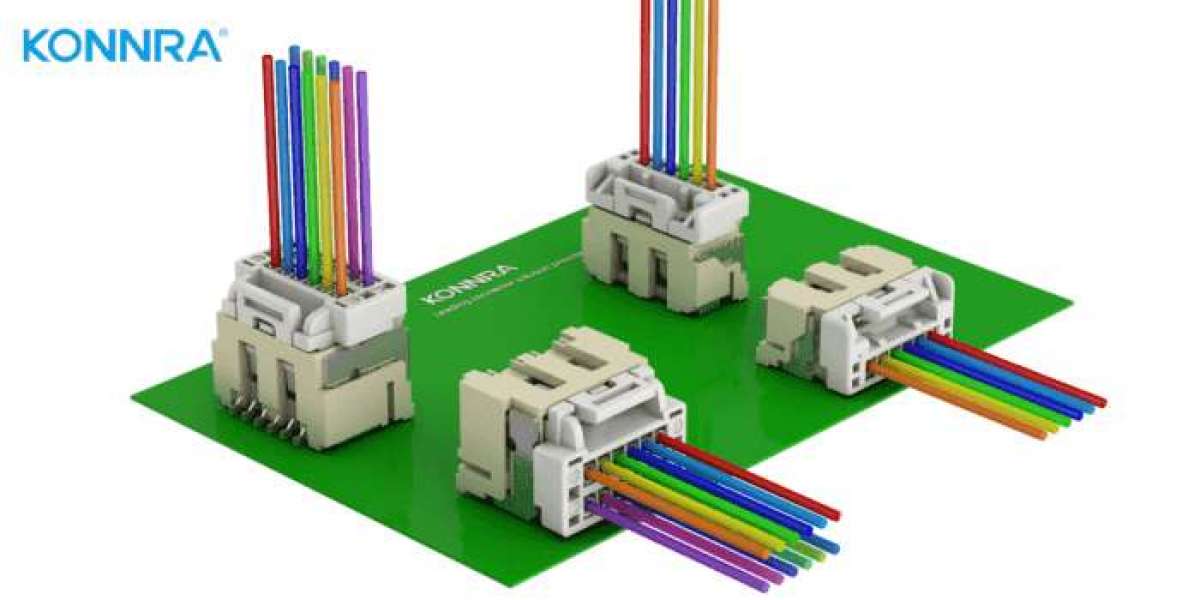In the realm of electronics, the wire-to-board connector is a critical component that ensures the reliable transmission of electrical signals between various parts of a device. As technology advances and devices become more compact and complex, the demand for robust and versatile wire-to-board connectors has surged. This article delves into the intricacies of these connectors, highlighting their importance, types, applications, and selection criteria.
What is a Wire-to-Board Connector?
A wire-to-board connector serves as a junction point that connects individual wires to a printed circuit board (PCB). This connection is essential in various electronic applications, ranging from simple household gadgets to sophisticated industrial machinery. The primary function of a wire-to-board connector is to provide a secure and stable electrical connection, ensuring that the electrical signals transmitted through the wires are accurately delivered to the PCB components.
Types of Wire-to-Board Connectors
Wire-to-board connectors come in various shapes, sizes, and configurations, each designed to meet specific application requirements. Here are some common types:
1. Crimp Style Connectors:
These connectors use crimp terminals that are attached to the wires using a crimping tool. The terminals are then inserted into a housing, which is plugged into the PCB. Crimp style connectors are known for their reliability and ease of installation.
2. Insulation Displacement Connectors (IDC):
IDC connectors allow for the quick and efficient connection of wires without the need to strip insulation. The wire is pressed into a slot in the connector, which cuts through the insulation and makes contact with the conductor. This type of connector is ideal for mass production due to its speed and convenience.
3. Soldered Connectors:
These connectors require soldering the wires directly to the PCB. While this method provides a very secure connection, it is more time-consuming and less flexible than other types. Soldered connectors are often used in applications where the connection needs to be permanent and highly reliable.
4. Screw Terminal Connectors:
These connectors use screws to secure the wires in place. They are simple to use and allow for easy modifications and repairs. Screw terminal connectors are commonly found in industrial and high-power applications.
5. Spring Clamp Connectors:
Spring clamp connectors use a spring mechanism to hold the wire in place. They offer a tool-free installation and are particularly useful in applications where frequent disconnections and reconnections are required.
Applications of Wire-to-Board Connectors
Wire-to-board connectors are ubiquitous in modern electronics. Here are some of their common applications:
1. Consumer Electronics:
From smartphones to home appliances, wire-to-board connectors are essential in ensuring the reliable operation of a wide range of consumer electronics. They connect various components within these devices, facilitating seamless communication and power distribution.
2. Automotive Industry:
In vehicles, wire-to-board connectors are used in everything from engine control units to infotainment systems. They are designed to withstand harsh environments, including high temperatures and vibrations.
3. Industrial Equipment:
Wire-to-board connectors are integral to industrial machinery and control systems. They provide secure connections for sensors, actuators, and other critical components, ensuring the smooth operation of complex industrial processes.
4. Medical Devices:
In the medical field, reliable connections are crucial. Wire-to-board connectors are used in medical devices such as patient monitors, imaging systems, and diagnostic equipment, where precision and reliability are paramount.
5. Telecommunications:
In telecom infrastructure, wire-to-board connectors facilitate the connection of various components within network equipment, ensuring reliable data transmission and communication.
Selecting the Right Wire-to-Board Connector
Choosing the appropriate wire-to-board connector for your application involves several considerations:
1. Current and Voltage Requirements:
Ensure that the connector can handle the electrical load of your application. Overloading a connector can lead to overheating and failure.
2. Environmental Conditions:
Consider the environment in which the connector will operate. Factors such as temperature, humidity, and exposure to chemicals or vibrations can affect the performance of the connector.
3. Size and Space Constraints:
Select a connector that fits within the available space on your PCB and accommodates the necessary wire size.
4. Ease of Installation:
Depending on your application, you may prefer a connector that is easy to install and remove, especially if maintenance or modifications are anticipated.








